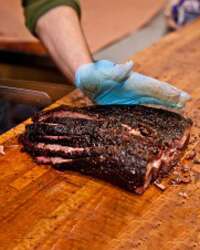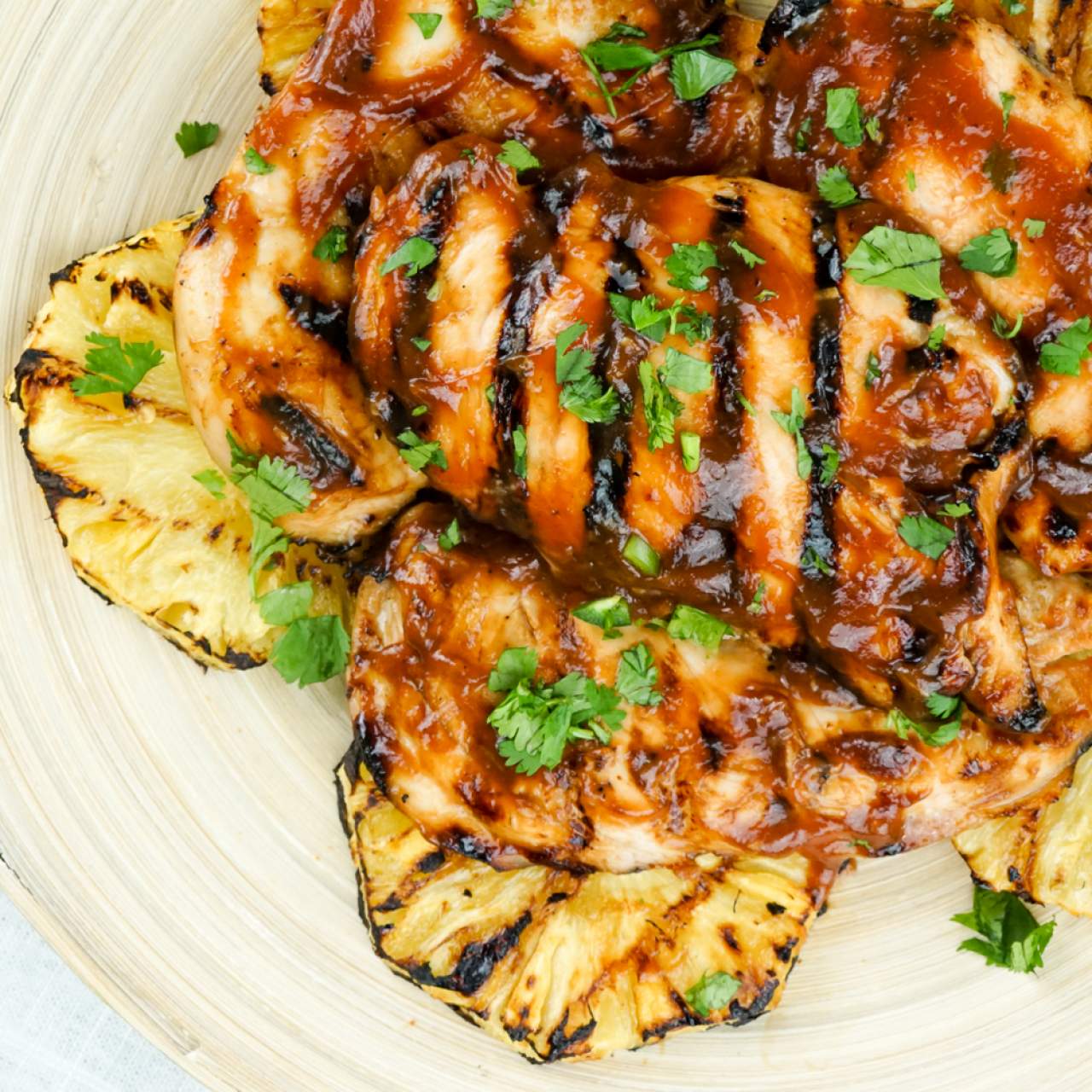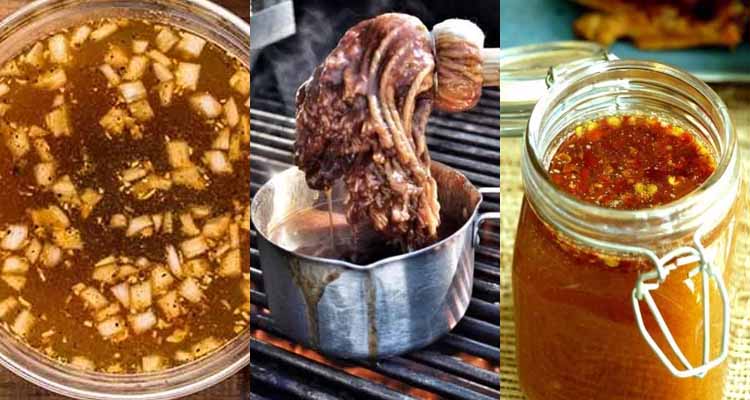
For more information on dry rub application, see this article. For a uniform coat, you should rub the spice mixture onto the meat with your hands. Massage the spice mix into any meat with a skin. This will improve the flavor of your meat. Before you apply dry rub to your meat, these are some of the essential ingredients.
Prior to rubbing, moisten meat
To make your meat tender and juicy, you should moisten it before adding a dry rub. Salt is a wonderful flavor enhancer. It has the ability penetrate the meat to flavor the meat. Salt also intensifies the flavors and aromas. It should be part of every dry rub recipe. Salt is generally added to your rub at a ratio of 1 to 1 with meat.
Use a dry rub liberally to all sides of the meat. Especially on thick cuts, make sure to season the "sides" and the main face of the meat as well. Use the opposite hand to rub seasonings into meat. The rubbing motion is important because you want the seasonings to penetrate into the meat. After you have applied the dry rub, you have two options: grill it immediately or wait until you apply another coat.
When applying a dry rub, make sure to wipe the surface of the meat completely with a damp cloth. This will help the dry rub stick to the meat better. When it is completely dry, you can wrap the meat tightly in plastic wrap and refrigerate it for at least an hour. Make sure that you marinate the meat before adding a dry rub. This will prevent bacteria growth and ensure that dry rub does not become stale.
Marinating meat does more than add flavor. Marinades can also be used to tenderize the meat. This is due to enzymes working on protein strands. The flavor of a dry mix will not be affected by liquids but they will help it stick to meat with a smooth surface. You might marinate your meat at least a couple hours before using dry rub. This will allow it to soak overnight.
Dry rubs can also be moistened. Dry rubs can be made with brown sugar. This sugar is slightly moist and forms a good glue on the meat. Maple or turbinado sugar is another good choice. But be careful with this type of sugar as it burns very easily. Both can be combined. Your rub should be suitable for the kind of meat that you're using.

After your meat has been marinated, add a second layer with rub. This is a great way to add flavor, but be sure to apply enough rub so that it sticks to the meat. You can mix your own rubs or use pre-made commercial rubs to make your customized rub. Depending on the location of your dry rub, you will need to adjust the amount. According to science, a tablespoon per pound of meat is the recommended amount. But it's important that you experiment to find the right amount for you.
After rubbing with dry paste, sprinkle the mixture with sugar or with paprika.
The simplest way to add some spice to your ribs is to sprinkle them with sugar or paprika before sprinkling with smoked paprika. There are many kinds of paprika. However, you should select the one that is the most heat. Uncertain if you don't want a label? You can buy paprika unlabeled. This type paprika won’t add as much flavor to your food as the labeled.
A dry rub can be made at home, and stored in an airtight container for easy cooking. It combines savory spices with dark brown sugar, which will promote browning. This sweet and savory combination will enhance any meat's flavor. You can also make your own mix using your favorite herbs for added variety. The more you use it, the more you will love!
Make sure the meat is dry before applying dry rub. The rub should be applied to approximately one-and-a-half pounds of meat. You want to achieve the best results. Rub the rub all over the meat and massage in. A dry rub can be used to coat a chicken breast, a pork loin rib or an ice cream sandwich. Make sure to adjust the amount according to how you will cook it.
Commercial rubs can be purchased at grocery stores. Some are popular and have loyal followers. A base of salt is often the starting point for commercial rubs. Salt is cheap and adds bulk. However, paprika works best for meat. The best way to change the flavor of your meat ribs is by creating your own rub. Mixing your own rub can save you a lot of money.
Dry rubs can be used to enhance the natural flavor and aroma of meat. A good combination can make inexpensive cuts of meat taste like a million bucks. A dry rub can include various types of salt and sugar as well as chili peppers, garlic powder or mustard powder. These rubs can be prepared quickly and stored in a sealed container. They will enhance the flavor of your meat.
Dry rubbing differs to dry brining in the fact that it does not require you to apply the seasonings prior. Avoid rubbing your meat with sauces if dry rubbing is done ahead of time. While this method may be convenient, it can also result in meat that is overly soft and mushy. People prefer to massage the dry rub before grilling.
Signature ingredients in dry rubs
A few key factors should be considered when preparing your own dry rub. Spices and herbs lose flavor and aroma often after nine months. For a better flavor, grind fresh herbs or spices in a coffee machine. Your dry rub should be mixed just before using it. This will ensure that they retain their flavor. It is possible to prepare the dry rub ahead of time, but it is best to do this right before you serve it.

There are many varieties of rubs that you can choose from. The first type of rub is called savoury. Its main ingredients are spices such as dry mustard, onion powder and garlic powder. It is also rich in spices such as red chili flakes or dried chipole that make it more spicy. Aside from meat, it can also be used on vegetables and inedible objects, such as fish.
A dry rub contains a blend of spices and herbs that are rubbed into meat before cooking. Different types of rubs can be made with different spices. They also have different amounts. A barbecue rub may contain coarse salt, pepper, and pepper; a Jamaican Jerkrub, on the other hand, includes allspice. Nutmeg. ginger, garlic, and cayenne pepper. You can add a little dried rice to make a rich, flavorful rub.
Dry rubs should always be stored in an airtight sealed container. It can be used right away, or it can be stored in a sealed container for several weeks. You can mix the ingredients and spread it on a parchment lined baking sheet. The dry rub will be absorbed by the meat and make it taste incredible! Let the meat rest for at least eight hours after applying the rub.
Dry rubs are a great way to add flavor and texture to your meat, without the need for additional sauces. Dry rub recipes are easy to prepare and can enhance the flavor of meat without using sauces. They can also be prepared in a matter of minutes and mixed right before eating. You can either mix the ingredients yourself or buy a bag of dry rub ingredients and shake it on the meat. After making the dry rub, you can freeze it.
Salt is another important factor to consider when making your own rub. Salt is an important ingredient in most rubs. However it is not easy to remove it. Many rub manufacturers don’t know the science behind salt removal, so they don’t offer a saltless version. For this reason, you should separate the salt and rub while making them. This gives you more control over the application and helps to avoid salt from interfering.
FAQ
What is the cost of a culinary school?
The cost of a culinary school depends on where you are, how much you study, and what program or course you choose. The annual tuition average is between $10,000 and $30,000 The majority of students graduate with around $20,000 in student debt. There are programs that offer work-study and scholarships.
Are there any free online cooking classes?
Many websites offer cooking lessons for free. YouTube is a great place to search for cooking videos. You may have access to thousands upon thousands of recipes on some websites. While you may have to pay a monthly charge, these websites allow you to try out the recipes for 30 days for no cost.
How do you become a chef?
There are many options for becoming a chef. To start, you can take a course at your local community college. Consider attending culinary school. The last option is to apply for a job as a paid intern.
How can I motivate myself to cook?
It's fun to cook for your friends and family. Cooking for your own family is much easier than making meals for others. You can be inspired to cook if you try something new. You will be able to learn new techniques and ingredients. It's also possible to use recipes from other cultures in order to broaden your culinary knowledge.
How long does learning to cook take? How long do I need to learn to cook?
It all depends on what level of skill you have. Some people are able to learn basic cooking skills in a matter of days. Others might take months or years before they feel confident enough to teach themselves how to cook.
The amount of time needed to learn to cook varies considerably based on the person. Someone who has never been to the kitchen before might need more time than someone who does it regularly. Different types of cooking require different amounts of experience. Baking requires more knowledge than frying.
If you want to learn how quickly you can cook, you should focus on learning a specific technique. You can then move on to the next technique once you have mastered it. Do not worry about how long it takes you to learn how to cook. Enjoy the process and keep practicing.
Statistics
- According to the BLS, chefs earn $58,740 a year. (learnhowtobecome.org)
- The median pay for a chef or head cook is $53,380 per year or $25.66/hour, according to the U.S. Bureau of Labor Statistics (BLS). (learnhowtobecome.org)
- under 10 Kids have been taught that there is special food just for them, and Fiese says that 10 percent of kids will throw a tantrum if they don't get the food they want. (washingtonpost.com)
External Links
How To
How to become a chef
A career path for chefs is one of the most interesting careers you could choose. This job requires a lot knowledge and skills. It can be difficult to determine what job is best for you. You can start immediately if you are looking to enter this field. There are many options for you to work in restaurants, hotels, catering businesses, or take cooking classes. To make the decision easier, we've prepared some useful tips on becoming a chef.
-
Learn to cook! Cooking is something that everyone should master at least once. Learn how to cook even if you don’t know much about cooking. So many different recipes are available online, and they are easy to follow. Remember to take your time when learning new things. Take your time, enjoy each step, and don't rush to learn new things.
-
You should get a degree in culinary arts
If you wish to become a professional chef, a culinary arts degree might be the right choice. You will develop your own taste and style while learning valuable knowledge. Culinary schools offer courses such as baking, pastry making, meat cutting, and much more. Students are required to stay in class for several years before graduating. You should consider carefully before you choose any school if you want to be a chef.
-
Work in a restaurant
Working in a restaurant is probably the easiest way to enter the world of chefs. Many people start out as chefs because they get hands-on experience. Restaurants always look for qualified staff, especially those who have worked in other fields. If you're looking to be a chef, it is worth applying for job opportunities in restaurants.